Will Gompertz resurrects Turner for a tour of the art prize in his name ★★★★☆
- Published
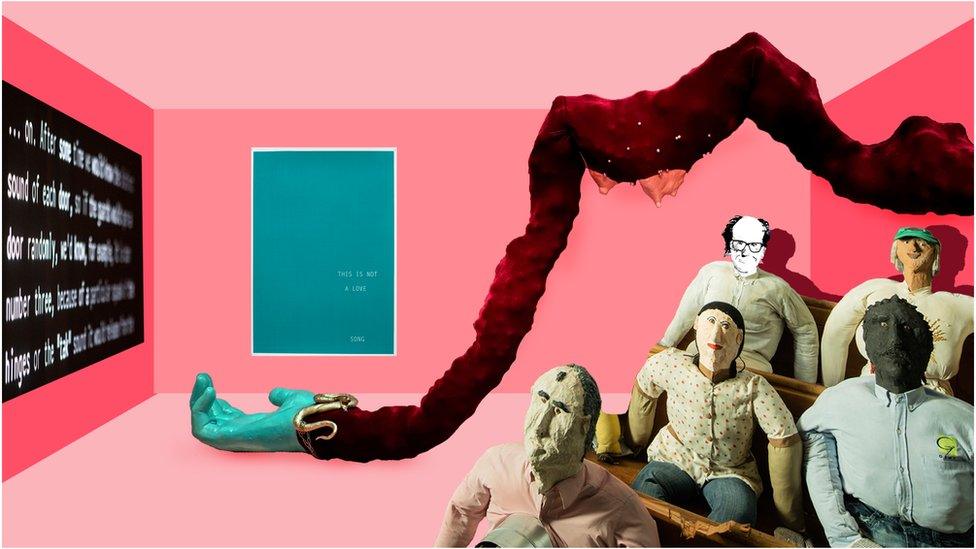
If you happen to be walking along Oxford Street in London this week don't be too surprised if you detect a hint of patchouli and orange blossom mixed with the usual stench of diesel fumes.
The sweet smell of luxury perfume will have wafted down on a gentle northerly breeze from Regent's Park, where the world's wealthy elite will be en masse, shopping at the Frieze Art Fair.
The hardier among them might embark on a day out to Margate, where they will promenade beside the sandy beach on which TS Eliot partially wrote The Waste Land ("On Margate Sands./I can connect/Nothing with nothing."), and look across to Sir David Chipperfield's elegant, modern Turner Contemporary art gallery, the venue for this year's Turner Prize exhibition.
They will know that it is situated on the very spot JMW Turner - the great British Romantic painter after whom the prize is named - stood 200 years ago. He was transfixed by the light on the North Sea, "The skies over Thanet are the loveliest in all Europe" (this from a man who painted in Venice).

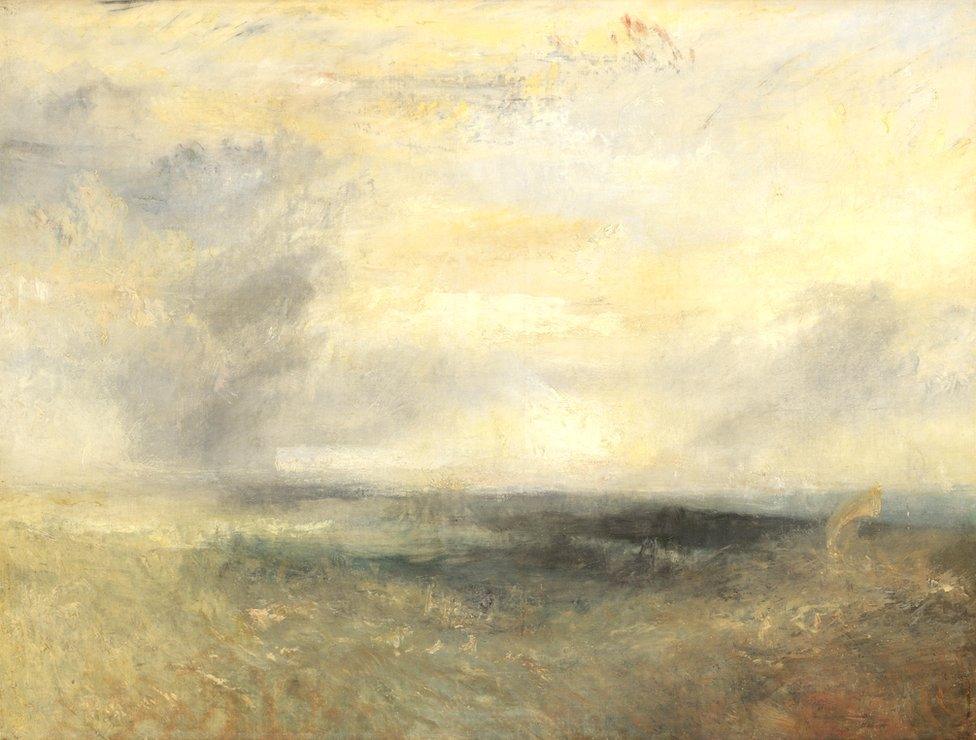
Margate, from the Sea, ca 1835 by JMW Turner, who was drawn to the luminosity of the town's light, and was known as the "painter of light"

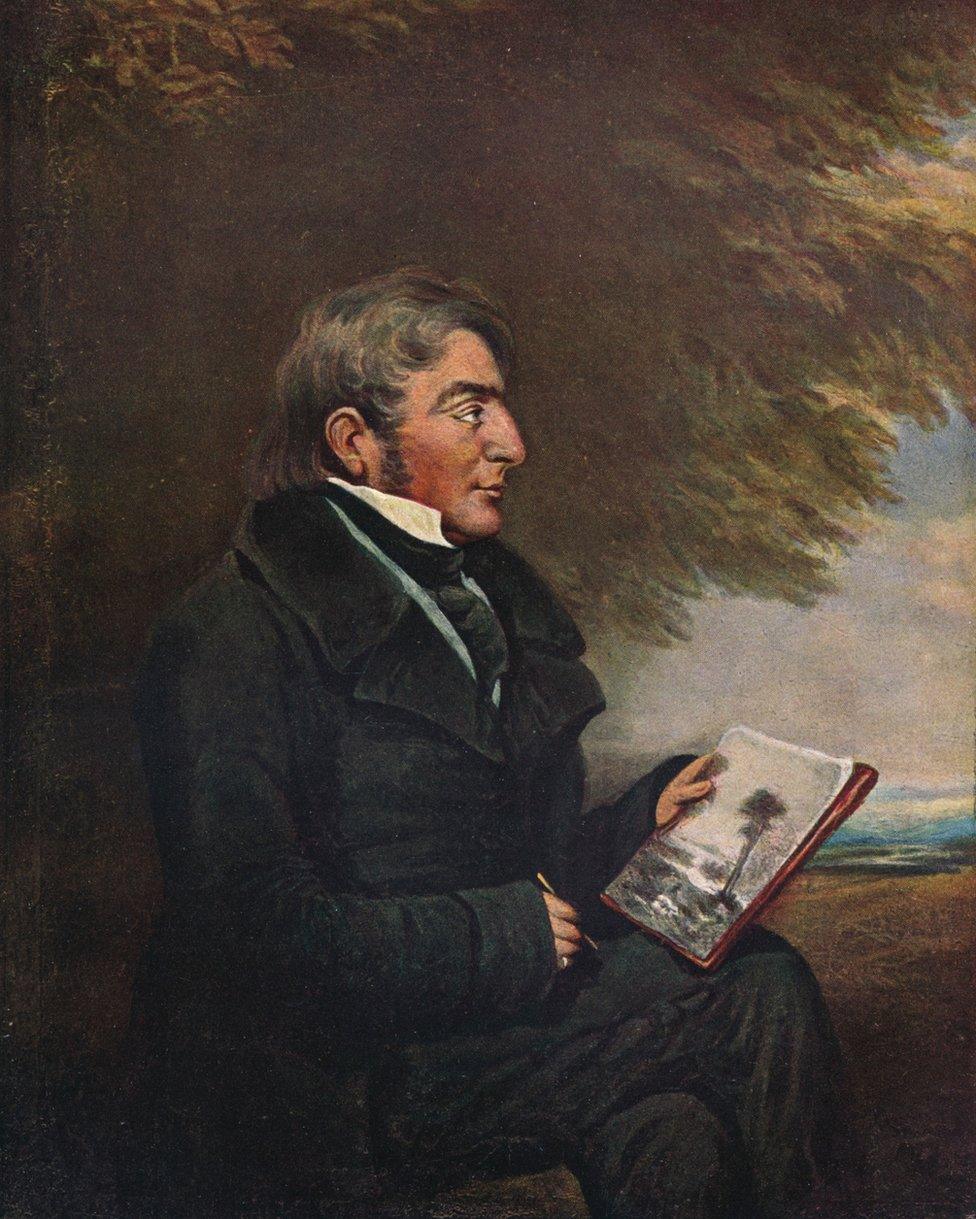
JMW Turner, circa 1841 (portrait by Charles Turner) took his sketchbooks, canvases and paints out with him every day

But what would he have made of the work produced by the four artists competing for his eponymous award now in its 36th year?
He was a coarse, irascible Londoner, quite unlike the refined group of super-rich, globe-trotting 21st Century collectors who will make the pilgrimage east next week. One can only imagine the scene as they go around the show together.
Turner [on entering Oscar Murillo's exhibit]: What's this balderdash?
Collectors: Mr Turner! Oscar's work isn't…err…that. It demonstrates a sustained emphasis on the notion of cultural exchange and the multiple ways in which ideas, languages, and everyday items are displaced, circulated, and increasingly intermingled.
Turner: 'Twas ever thus my lovlies! Doesn't explain them rows of papier mache coves with gross bellies, though. They remind me of the stuffed shirts down the Royal Academy.
Collectors: HaHaHaHaHa. You're hilarious! You should have seen the effigies coming down on the train. What a sight! Almost Turneresque, you could say.
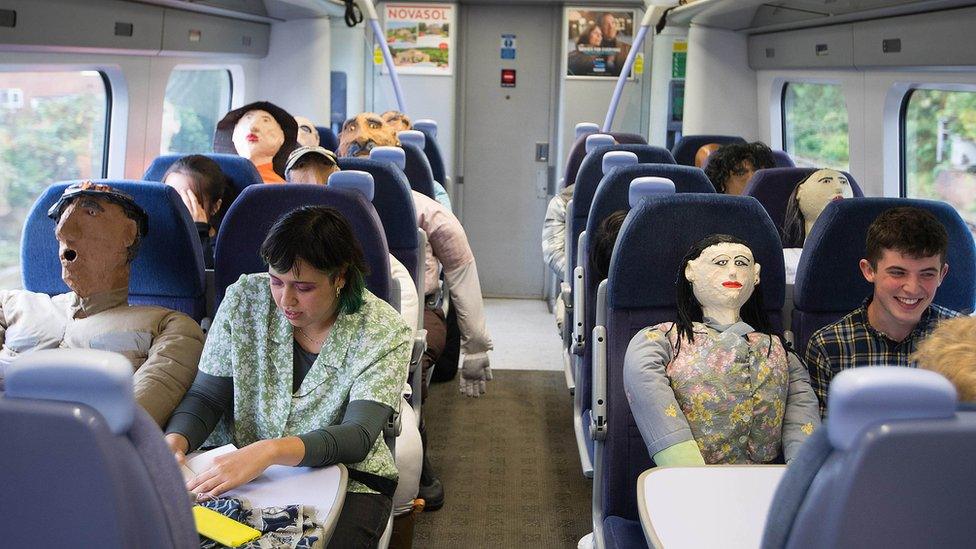
Passengers on the London-to-Margate train enjoyed the journey with Oscar Murillo's effigies

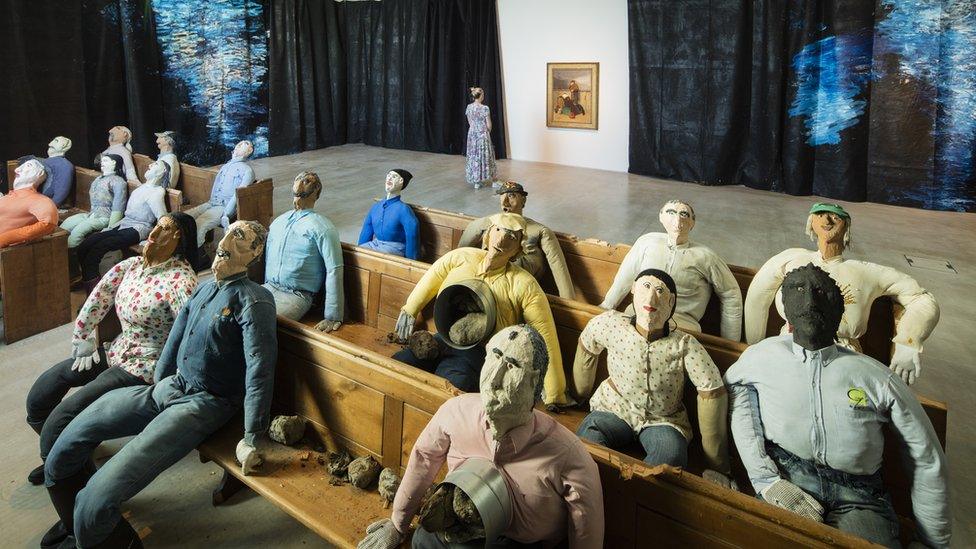
In Collective Conscience, the effigies for Oscar Murillo show the fragility of the human body
Turner: Are you taking the p…
Collectors: No! There's a connection with your painting and your politics. They represent a globalised workforce entrapped within the capitalist system of production as both worker and consumer.
Turner: The legacy of the rotten industrial age, eh? I see. But what the Dickens is going on with that big black sheet covering the window? It's obscuring the loveliest skies in all of Europe!
Collectors: That's a black canvas signifying the darkness of our contemporary moment.
Turner: Gawd, give me strength. Next!
[They move on to watch Helen Cammock's 100-minute film, The Long Note.]
Turner: Ouch!
Collectors: What's wrong?
Turner: I've just walked into the bleedin' wall. Why's it so damn dark? Has that wretched Constable fellow been here making a nuisance of himself?
Collectors: No, Mr Turner, it's because we're going to watch a film
Turner: A what?
Collectors: A film. A bit like moving photographs. It's by Helen Cammock. She's looking at the role women played in the civil rights movement in Northern Ireland in 1968.
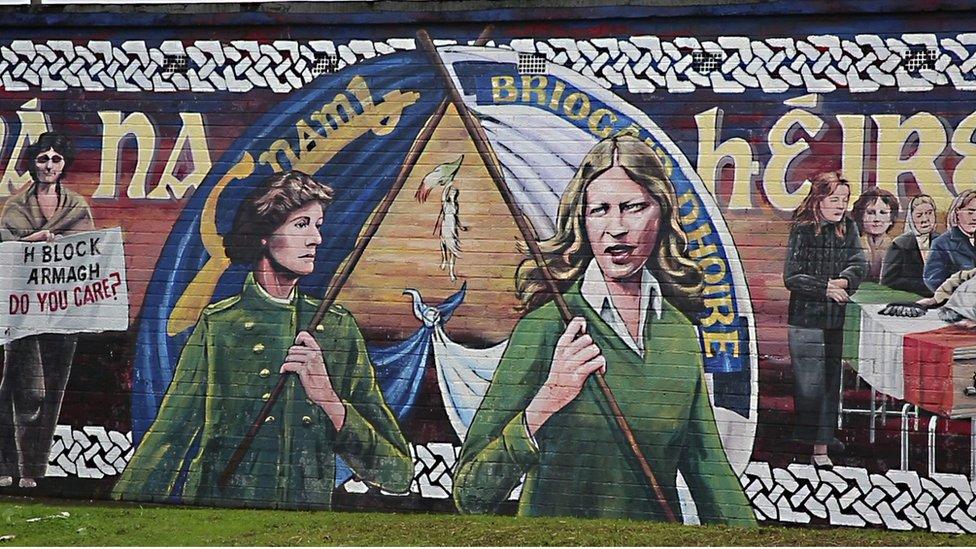
Helen Cammock's Long Note explores the involvement of women in Northern Ireland's civil rights protests in 1968
Turner: [Watches for a while] Is it supposed to be tedious?
Collectors: It's not tedious! It's important! Think of it like a painting but with sound and words.
Turner: I'm not stupid! I understand. I'd rather sit and watch that sea, mind. Are you sure it's art?
Collectors: Yes!
[They leave after 10 minutes of Turner fidgeting and huffing and make their way to Tai Shani's exhibit. Turner stands at the threshold of her gallery and looks in.]
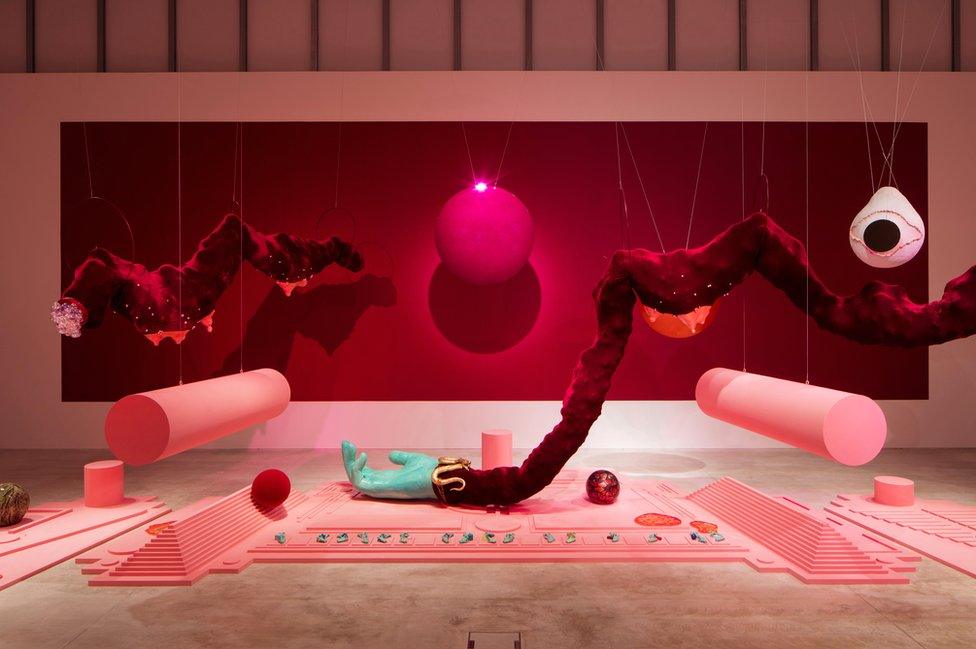
In DC Semiramis, Tai Shani explores what she describes as "feminine subjectivity and experience"
Turner: This is more like it! The colour! The imagination! A big pink landscape painting you can stroll into - it's like adding a ring to Dante's fine tale. Splendid!
Collectors: Are you taking the p…
Turner: No! It's first-rate… [looks over to the wall]… What are those?
Collectors: Headphones. You put them over your ears and hear a story that relates to the sculpture.
Turner: Hand 'em over. How long's the story?
Collectors: Over seven hours we think.
Turner: Lord love us! What's it about?
Collectors: Err, hmm, well…it's great artwork isn't it!
Turner: What's it about?
Collectors: Ah…it's… [reading from wall text]… a city in time, but not space, and the work explores feminine subjectivity and experience beyond traditional gender constructs.
Turner: What the deuce! Much has changed since I was a simple painter. Tell me more.
Collectors [still reading the wall text]: It's a world in which historical events, science fiction and myths combine, building a radical vision of a future world born of an alternative past.
Turner [referring to his landlady and lover in Margate]: Mrs Booth would have thought this capital, she really would. Is there anything else to see? I couldn't half do with a brew.
Collectors: Just Lawrence Abu Hamdan's installation.
Turner: Sounds like quackery.
Collectors: It's his exhibit! He calls himself a "private ear".
Turner: Is that Cockney rhyming slang?
Collectors: No! It's what he does. He takes "earwitness" testimonies from people who have suffered at the hands of authority and re-presents them as audio-visual stories on a translucent screen in the middle of the room.
Turner: What's wrong with making pictures?
Collectors: Nothing! We love your work!! But we love Lawrence, too.
[They walk into the exhibit. Turner watches the glass screen on to which words and pictures are projected, while listening to a narrative track being played though speakers. He is silent as glimpses of the recent horrors of being incarcerated in Saydnaya prison near Damascus, Syria are relayed. The film changes but Turner remains, watching and listening to Lawrence Abu Hamdan reading a text in a work called Walled Unwalled (2018). The master artist is mesmerised. He stays and stays and stays. Eventually, slowly, he leaves.]
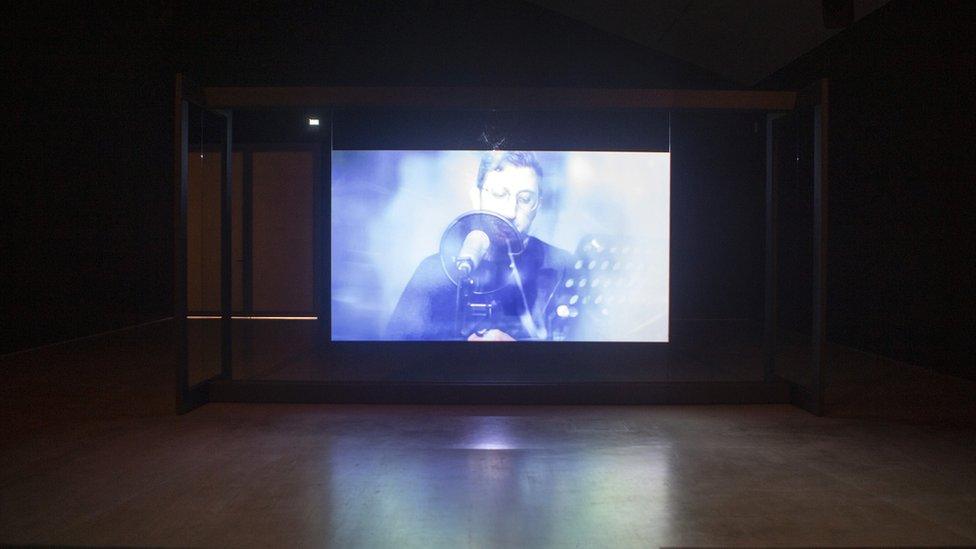
In Walled Unwalled, Lawrence Abu Hamdan looks at legal cases in which evidence was obtained through walls, doors or floors

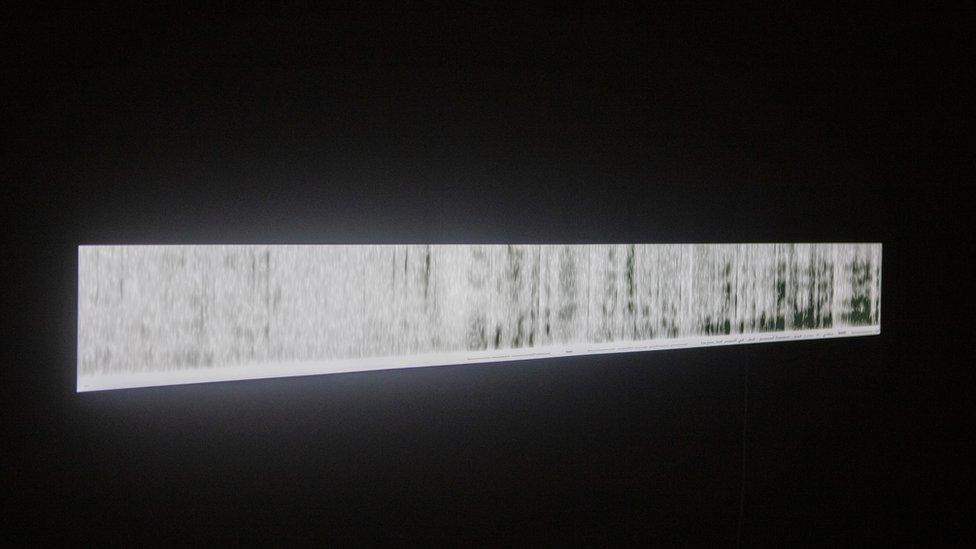
Saydnaya (the missing 19db) is Lawrence Abu Hamdan's acoustic investigation into the Syrian prison near Damascus
Collectors: What did you think?
Turner: It would be an honour for me if that man won any prize awarded in my name.
Recent reviews by Will Gompertz
Follow Will Gompertz on Twitter, external
